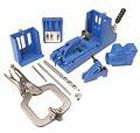Project details
Skill
Cost
Estimated Time
 Circular saw
Circular saw Straight edge
Straight edge Miter saw
Miter saw Drill/driver
Drill/driver spade bit – 1-inch
spade bit – 1-inch Pocket hole jig
Pocket hole jig Cordless finish nailer
Cordless finish nailer Router with 1/2-inch-diameter straight-cutting bit
Router with 1/2-inch-diameter straight-cutting bit Clamps
Clamps Ratchet wrench and sockets
Ratchet wrench and sockets
In this video, This Old House general contractor Tom Silva transforms one sheet of plywood into a hold-all, easy-roll cart.
Steps:
1. Use circular saw to cut plywood parts to size. Employ a straightedge guide to ensure perfectly straight cuts.
2. Crosscut the legs to length on the miter saw. You need two pieces of plywood for each of the four leg assemblies.
3. Drill pocket-screw holes into the legs using a cordless drill and pocket-hole jig.
4. Apply glue to the leg assemblies, then tack them together with a cordless finishing nailer and 1½-inch nails.
5. Screw together each leg assembly using pocket screws.
6. Drill pocket-screw holes into the underside of the top and bottom shelves. Space the holes about 4 inches apart.
7. Attach the legs to the bottom shelf using glue and the finishing nailer.
8. Glue and nail the sides to the bottom shelf.
9. Secure the bottom shelf to the legs and sides with pocket screws.
10. Glue and nail a ¾-inch-square reinforcement strip of plywood to the inside corner of each leg assembly.
11. Screw the back rail to the cart frame, then screw on the top shelf.
12. Drive nail into upper side piece to represent the handle center.
13. Install a ½-inch-diameter straight-cutting bit in a router. Pivot the router against the nail to cut a rounded shape into the end of the upper side piece.
14. Bore a ¼-inch-deep handle hole into each upper side piece using a drill and 1-inch-diameter spade bit. Repeat to round and drill the opposite side piece.
15. Cut the handle to length from a 1-inch-diameter hardwood dowel. Set the handle between the upper side pieces and into the ¼-inch-deep holes.
16. Fasten the upper side pieces to the cart first with the finishing nailer, and then with pocket screws.
17. To attach each caster, bore four ⅜-inch-diameter holes through the bottom shelf to accept 5/16-inch-diameter x 1 ½-inch-long carriage bolts.
18. Bolt on the casters, placing two swiveling casters in the front and two fixed casters in the rear of the cart.










